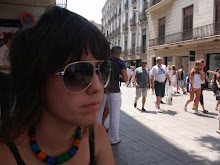This late post about the subject is related with the Digital Divide because it is one of the most important topics I have learnt this year and, also, because it is one of the conclusions I acquire from this blogging experience.
The Digital Divide is defined by: The gap or imbalance in people’s access to digital information and technology including physical access, economic resources and skills. However, for me the Digital Divide is me spending two ours to change the background and my brother, a native user, spending fifteen minutes to change it.
We divided Internet surfers calling them “digital natives” or “digital immigrants” users. However, I feel that a new forgotten term should be created: “digital non nationality” users. This generation is located between the two kinds of users.
“Digital non nationality” users are kind of revolutionary users who do not want to subjugate to Internet rules. They have an anarchism way of working because they try to apply literally and without criterion the “offline” rules to the “online” rules. They only want to take the advantages that Internet apparently offers them; they do not tend to depth in other contents
These users tend to be people from seventeen to twenty three years old who grew up knowing the concept of computer but without interacting with it. These users grew up without a physical access to computer that deny them the possibility to develop operational or information skills which could lead to strategic skills nowadays.
These users tend to suffer lack of motivation because they are not able to manage the advantages of the World Wide Web. This digital divide of skills and usage access can create inequality.
This last kind of “digital non-nationality” users will acquire little by little, as they interact with the net, their own identity. As Charles Darwin said: “In the evolution the individuals who survive are the ones who better adapt to the environment, not the strongest or the most intelligent”





